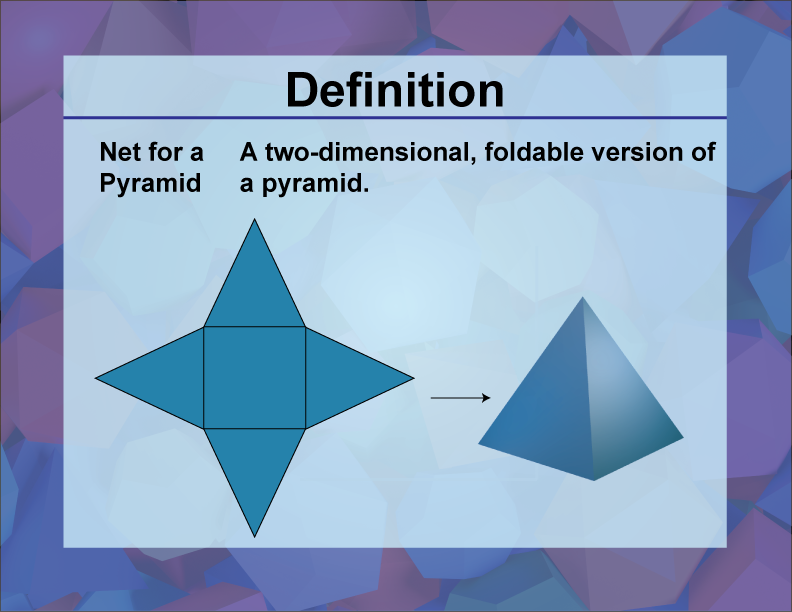
Display Title
Definition | 3D Geometry Concepts | Net for a Pyramid
Display Title
Net for a Pyramid

Topic
3D Geometry
Definition
A net for a pyramid is a two-dimensional representation that, when folded along its edges, forms the three-dimensional shape of a pyramid.
Description
In the study of three-dimensional geometry, understanding the concept of nets is crucial, particularly for complex shapes like pyramids. A net for a pyramid is essentially a flattened version of the 3D shape, showing all its faces in a single plane. This representation is invaluable for visualizing how the pyramid's surfaces connect and for calculating its surface area.
The net of a pyramid typically consists of a polygonal base (often a square, triangle, or other regular polygon) surrounded by triangular faces that meet at a single point when folded. Each triangular face represents a lateral face of the pyramid, while the polygonal base forms the bottom. The number of triangular faces corresponds to the number of sides in the base polygon. For instance, a square-based pyramid will have four triangular faces, while a triangular pyramid (tetrahedron) will have three.
Understanding nets is essential for various applications in mathematics, engineering, and design. They allow for easy construction of 3D models from flat materials, aid in surface area calculations, and provide insights into the geometric properties of pyramids. Moreover, the concept of nets extends beyond pyramids to other polyhedra, making it a fundamental tool in the broader study of 3D geometry and spatial reasoning.
For a complete collection of terms related to 3D geometry click on this link: 3D Collection.
| Common Core Standards | CCSS.MATH.CONTENT.5.MD.C.3 |
|---|---|
| Grade Range | 4 - 6 |
| Curriculum Nodes |
Geometry • 3D Geometry • Pyramids |
| Copyright Year | 2021 |
| Keywords | three-dimensional geometry, 3d Geometry, defnitions, glossary term |